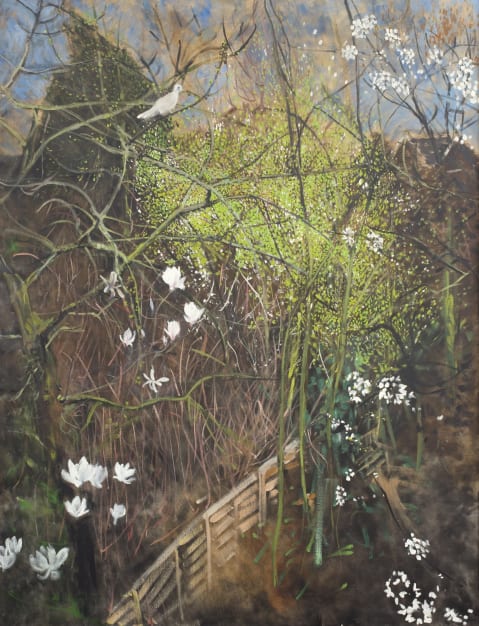Like so many busy or preoccupied people, the painter Jean Cooke had a messy garden. She turned it to her advantage in original jungle-like paintings.
InSight No. 142
Jean Cooke, The Wild Plum Tree, 1995
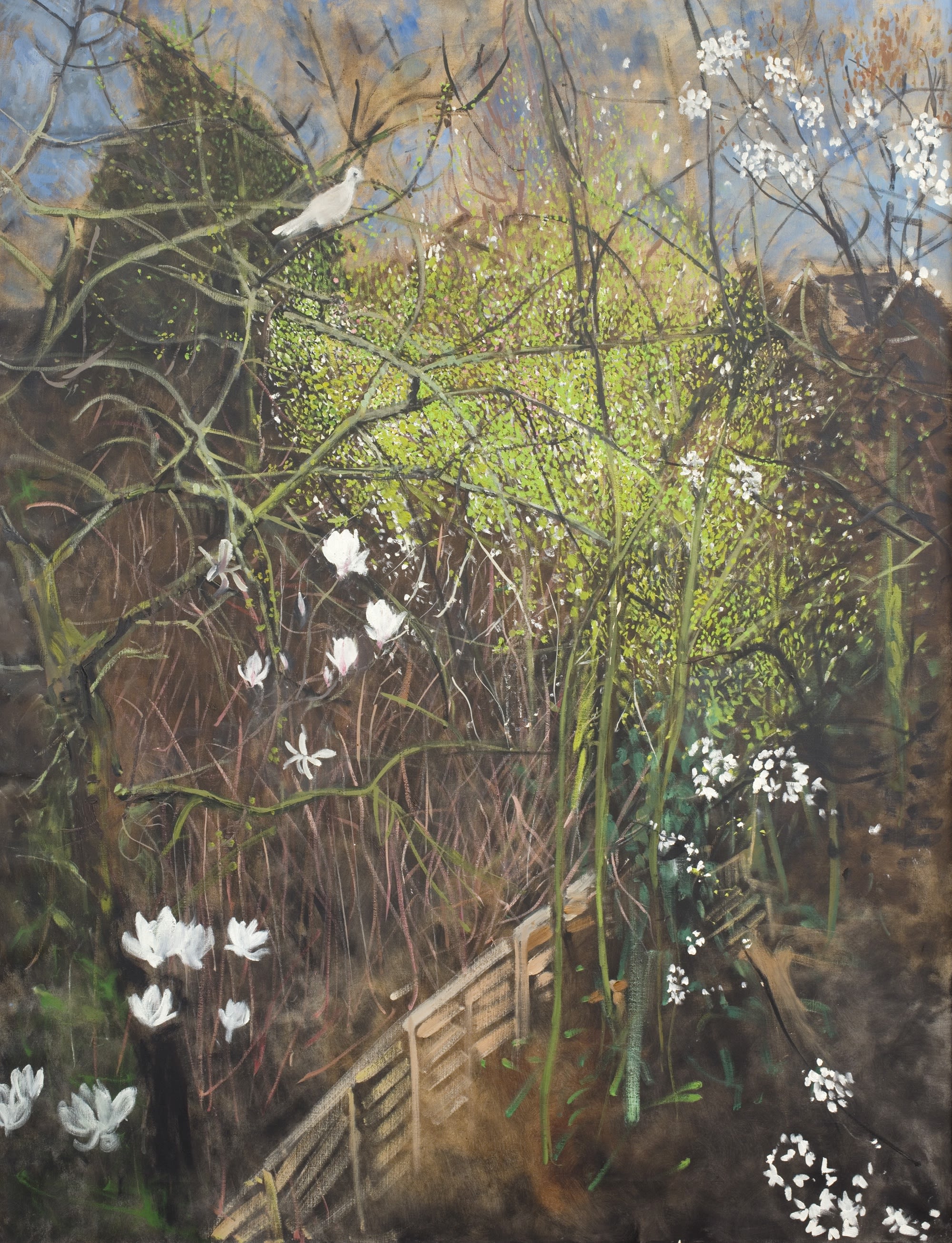
When spring arrived, Jean Cooke (1927—2007) set up her canvas and easel in the garden and began to paint. She enjoyed this season above all others. Many of her paintings from the eighties and nineties, among them The Wild Plum Tree, light upon the moment when leaves begin to press outward from inert branches and pale sunlight makes highlights of each tender bud. In 1960 Cooke moved with her family to 7 Hardy Road, Blackheath, where she remained for the next forty years. The extensive plot attached to the property was a recurring subject—painted in situ or looking out from her studio in the house—throughout the time she lived there.
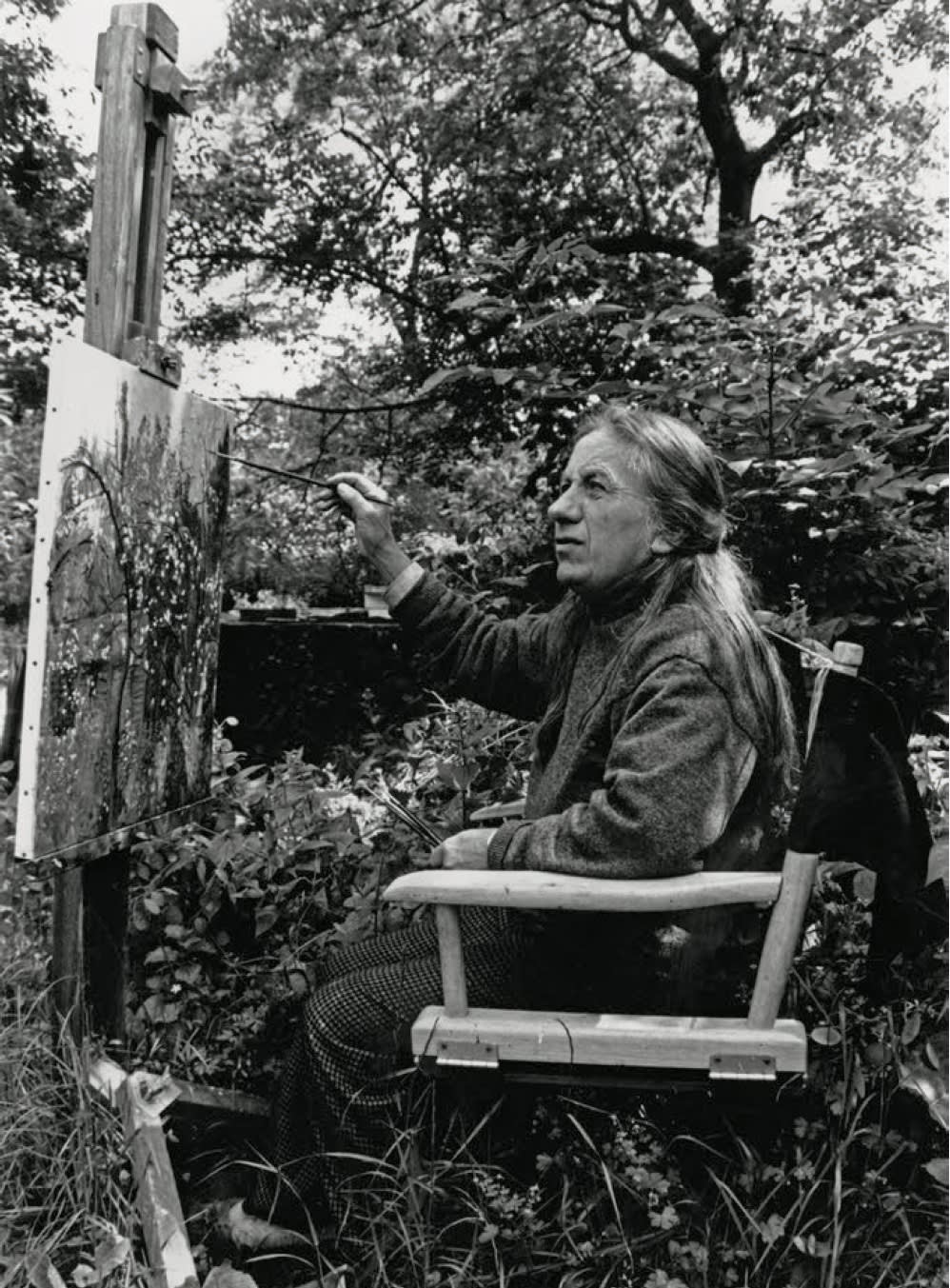
Cooke was a naturalistic painter motivated by her subjects. She painted them because they enthralled her. An astute pictorial artist, accuracy was of paramount importance and she was committed to a spatially coherent and detailed mode of representation. Speaking to her friend the playwright Nell Dunn in 1986, she said: ‘the springtime goes too fast, and each year I write in my diary to “be ready for the cherry blossom”. I haven’t painted it yet. Tomorrow is it going to snow? Am I ready for it?’ Recording rapid seasonal change was most challenging in spring as successive waves of new life altered the terrain continuously. But Cooke was well equipped with a developed technical facility. Her rapid exposition of a subject was typically followed by assiduous notation, with local detail worked out using fine sable brushes.
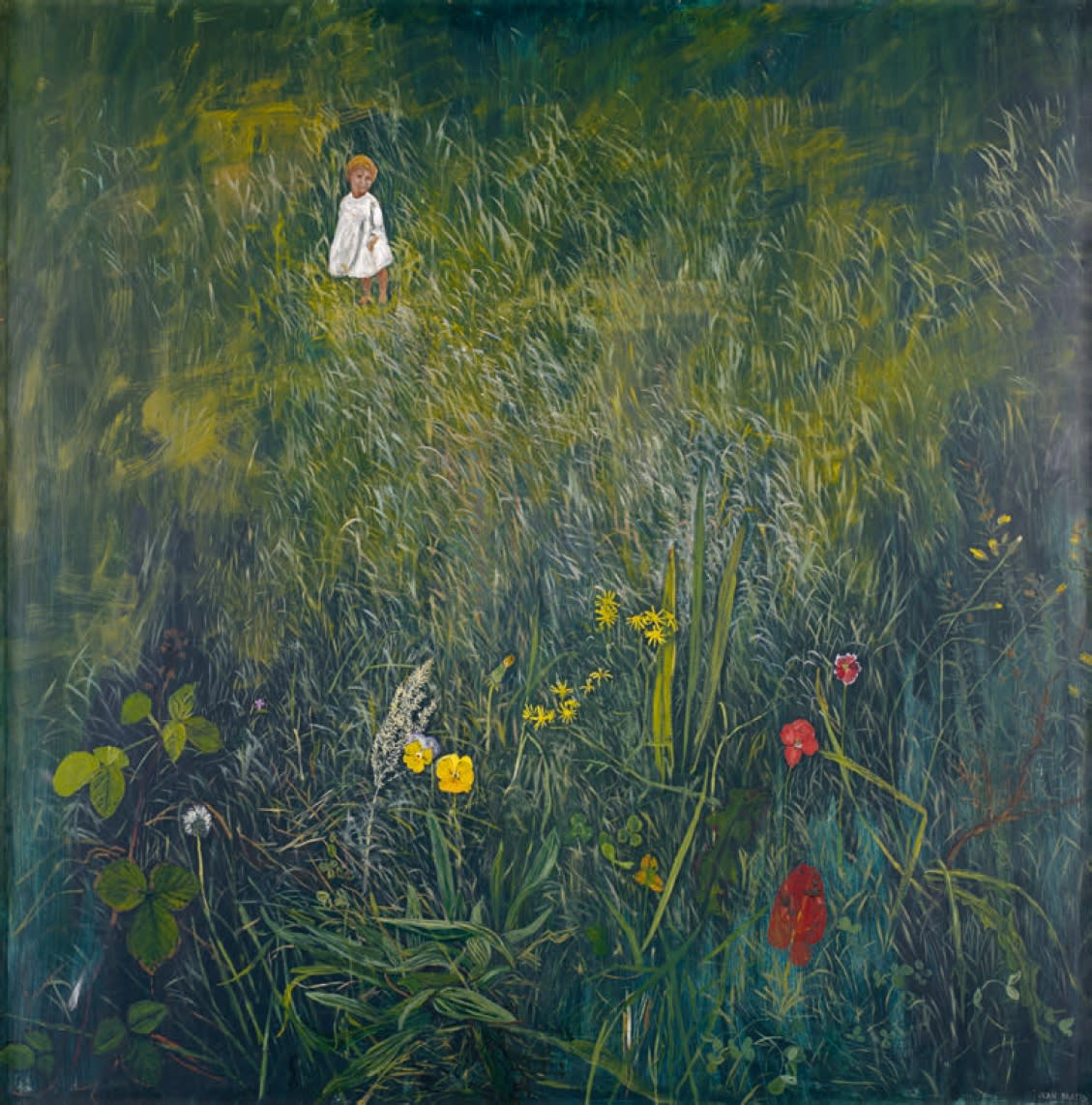
Cooke’s neglect of her garden—she sometimes called it ‘ungardening’—was partly a reflection of her priorities: her painting and the care of her children. Beyond these demands there was little energy to give less pressing concerns. Grass went unmown, fences unmended and trees unpruned. But the messy garden was not entirely accidental. The disarray was cultivated over an extended period of time and helped Cooke to create a new subgenre in works such as The Wild Plum Tree, which drew upon aspects of both landscape and garden painting traditions. Whereas Claude Monet’s waterlily pond was scrupulously tended, Jean Cooke’s rambling garden was unkempt to imperfection just as her painting required. Whereas earlier paintings such as Grassland had used the Sussex coastline to create landscape-scale wilderness, by the mid-eighties when she began painting spring blossom in earnest her own garden had achieved a similarly expansive quality.
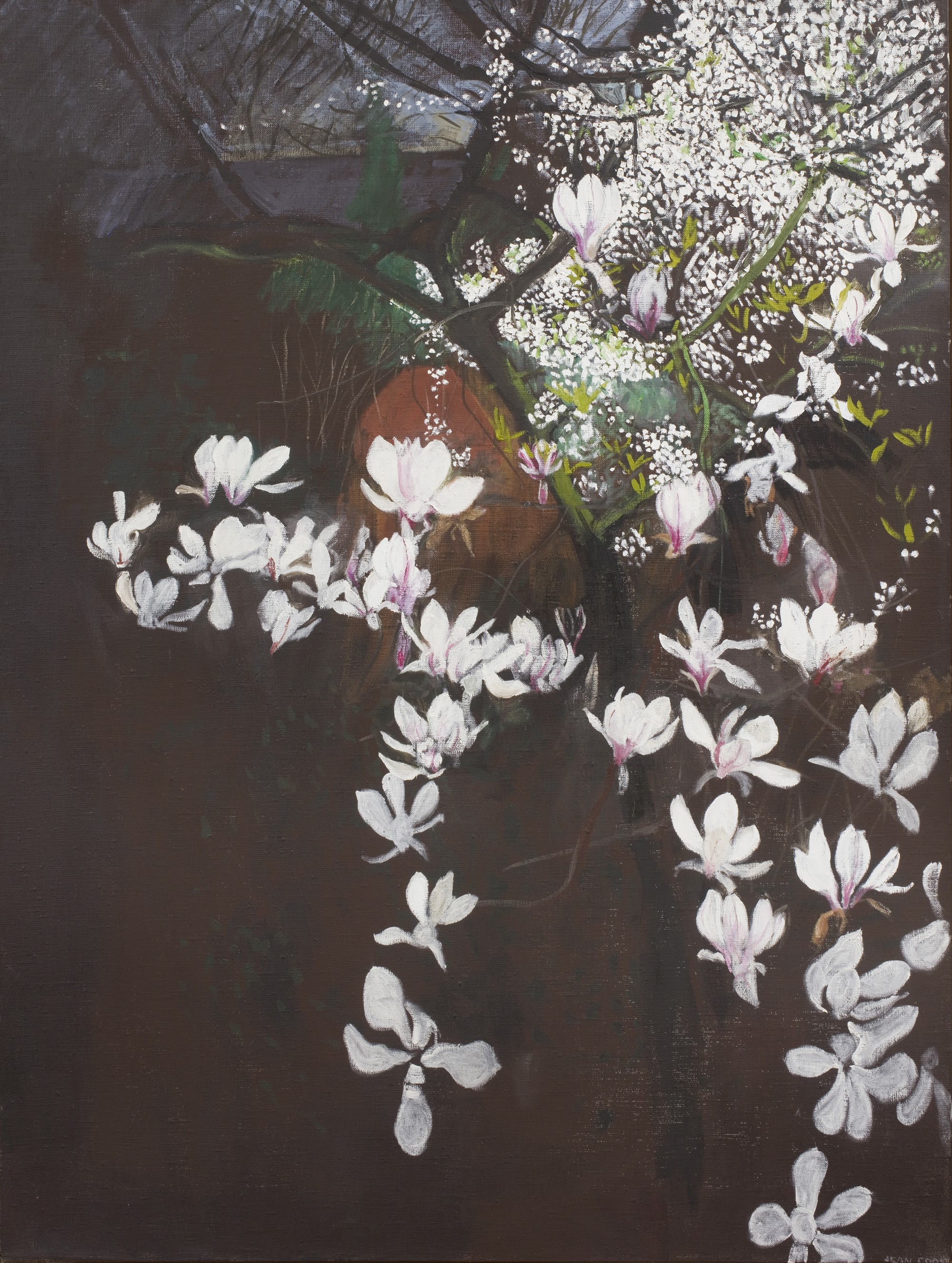
The fruit trees in Cooke’s garden were planted in the sixties by her then husband John Bratby. The Wild Plum Tree was probably painted in late February or March and depicts a flowering magnolia—the same as that pictured in The Birth of Icarus—beginning to wilt. The eponymous wild plum is beginning to leaf, its small white blossoms already spent. The nascent leaves are painted a luminous green, out of key with the muted brown and moss hues that predominate. Their intense colour brings these leaves to the surface of the picture plane through a tangle of awkward branches. Cooke concentrated these green marks at the centre of her composition in such profusion that the abundance of brush applications amounts to a cloud-like form. A bird is perched on a branch of the magnolia tree, probably one of the doves she kept and for a time afforded the use of an upstairs lavatory in the house.
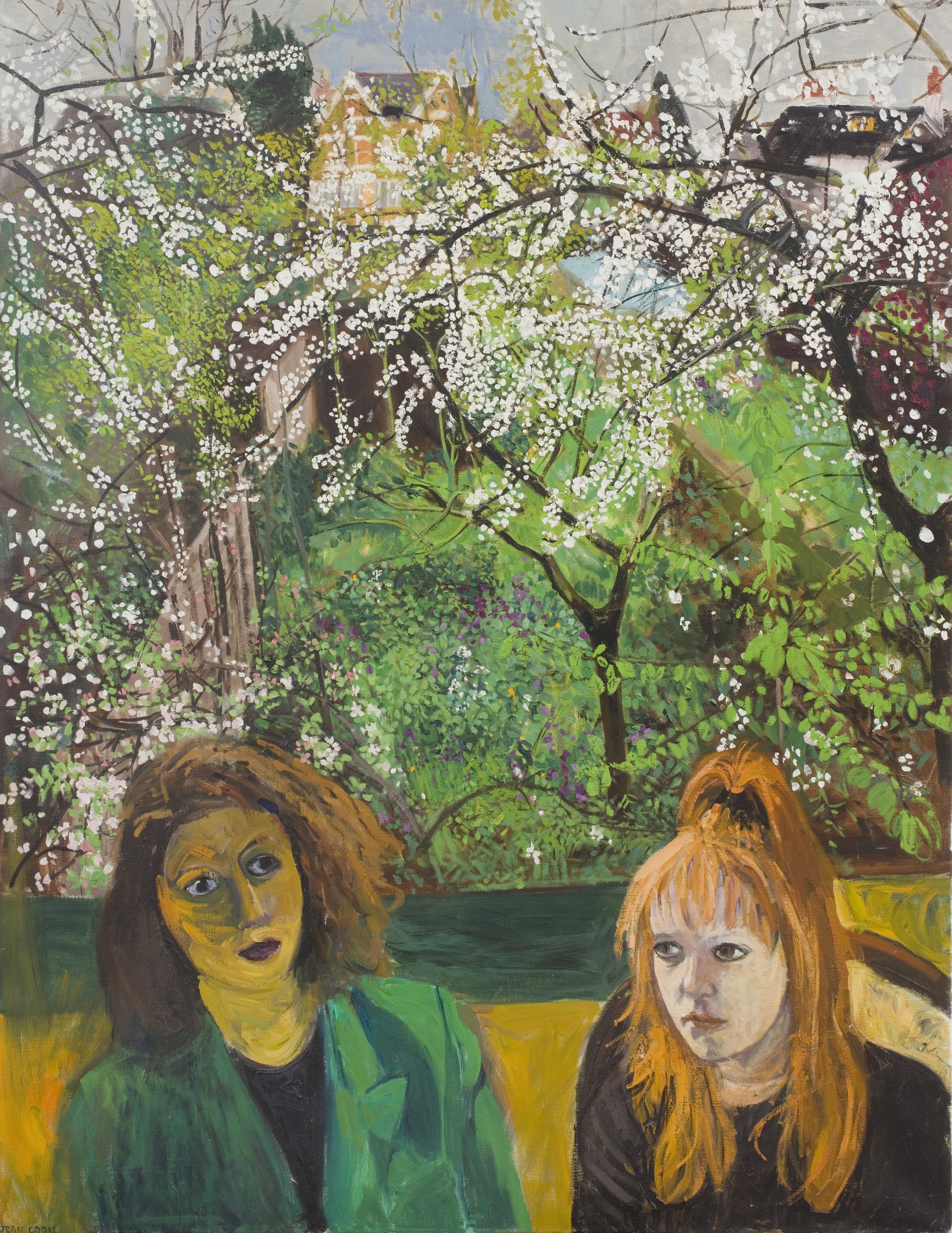
A comparable painting, The Window, shows a similar view of the garden laden with blossom and young leaves. Cooke’s daughter Wendy and her school friend Loise—recognisable in several paintings for her red hair and high ponytail—are pictured in the foreground. The interaction between figures close by and the garden beyond was a recurring source of visual interest to Jean Cooke. Notwithstanding the familiarity of these components, their combination often injected a note of strangeness or unreality into the composition. In fact the strangeness was not in the subject but rather in the artist, and Cooke’s work is distinguished by her peculiarly intense outlook. She asked Nell Dunn, ‘am I ready for it?’—her paintings of spring suggest she was.
Images
1. Jean Cooke, The Wild Plum Tree, 1995, oil on canvas, 50 x 40 in
2. Jean Cooke painting in her garden, 1990s, photographed by Linda Sole © Linda Sole
3. Jean Cooke, Grassland, 1963, Government Art Collection
4. Jean Cooke, The Birth of Icarus, 1998, Private Collection
5. Jean Cooke, The Window, 1989, oil on canvas, 122 x 91 cm
